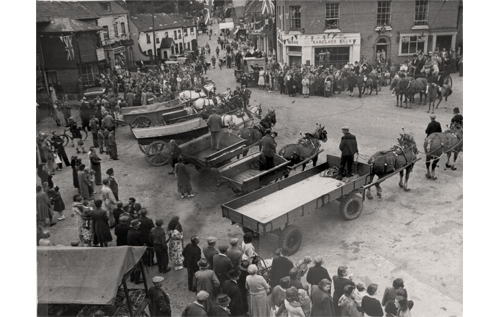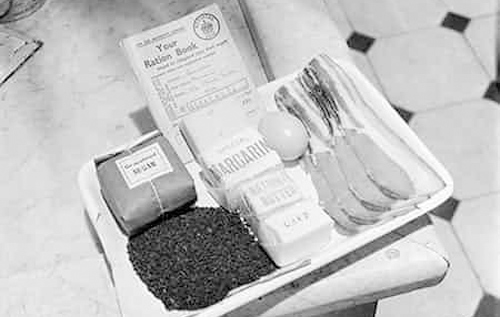The June picture in the Reepham Life 2018 Calendar shows the grand parade in the Market Place, which was part of Reepham Shopping Week in 1950.

In that year the average diet was still influenced by rationing and there was a heavy reliance on bread, milk and vegetables.
Fruit, vegetables and fish were not rationed, although, with a shortage of foods being imported, many fruit and vegetables were only available when they were in season.

Photo: © IWM (D 7958)
Before the war, more than two thirds of British food was imported. But enemy ships targeting merchant vessels prevented fruit, sugar, cereals and meat from reaching the UK.
At the time of the picture, petrol rationing had only just ceased in May 1950, followed by soap in September, but many essential items like tea, sugar, eggs, butter, meat and cheese were still on ration.
It took another four years before all rationing ceased. Tea was still rationed until 1952 and then in 1953 sugar and eggs became freely available and, finally, cheese and meat in 1954.
The continuance of rationing after the official end of the war encouraged people to carry on growing their own food in back gardens and allotments. Queueing outside shops to buy a family’s rations continued to be a way of life.
There were also severe shortages of most consumer products, which prompted the continuance of the wartime “make-do-and-mend” culture. Clothing did not come “off the ration” until 1949, four years after the war had ended.
Fourteen years of food rationing in Britain ended at midnight on 4 July 1954, when restrictions on the sale and purchase of meat and bacon were finally lifted.
Janet Archer
- The Reepham Archive is open to the public on the first Wednesday and Saturday of the month from 10 am – 12 noon (or by appointment), upstairs in the Bircham Centre, Market Place, Reepham. Email: reephamarchive@gmail.com
